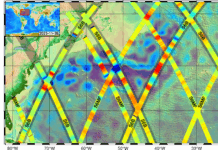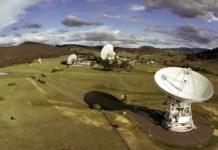In the realm of software development, ensuring a robust and structured application lifecycle is crucial for success. Picture this: an application development process without a solid foundation is akin to a human body without a spine. It lacks the necessary support and communication channels that enable developers to seamlessly progress through each stage, from inception to deployment. The challenge, historically, has been to establish this backbone, providing a cohesive framework that supports developers while facilitating the flow of information and automating essential processes.
Enter Docker Compose, a tool designed to be this very backbone. It lays the groundwork from the early stages of local development, through rigorous testing, all the way to the final deployment and ongoing maintenance. Docker Compose Bridge further enhances this by closing the remaining gaps in the application lifecycle management. With this tool, teams can take a complex, multi-container application from its initial code stage to production deployment in container orchestration systems like Kubernetes, using just a single Compose file.
Before and After: The Transformative Power of Docker Compose
To illustrate the impact of Docker Compose, let’s consider a typical scenario involving the development of a customer-facing SaaS application. This setup is a classic three-tier architecture consisting of the following components:
- Go API: Manages user accounts, payments, and anti-fraud checks.
- PostgreSQL and Redis: Used for data persistence and caching.
- TypeScript/React UI: Provides the interface for customer interaction.
The goal is to deploy this application on Kubernetes to ensure resilience, portability, and flexibility. The application will be spread across multiple cloud regions for optimal performance and availability. Let’s examine how Docker Compose transforms this lifecycle.
Before: The Challenges of Local Development
Without Docker Compose, setting up the necessary containers can be cumbersome. Developers might resort to creating scripts for automation, but this approach requires every team member to have the same script, which must be constantly updated. Before Compose, a typical setup involved manually creating networks and links, using Docker commands to stitch together the containers. This method is not only time-consuming but also prone to errors, especially when onboarding new developers.
Security and compliance often become afterthoughts in this chaotic environment. Standard security measures like Web Application Firewalls (WAF) or API gateways are frequently missing, and secrets may be scattered in plain text files. Debugging and observability require additional manual effort, pulling developers away from their core workflow.
After: Simplified and Streamlined Development
With Docker Compose, the previously convoluted setup is reduced to a single command and a single file. A compose.yaml file defines the entire environment, ensuring consistency and security across the board. This setup automatically includes security measures, observability tools, and any other necessary services. By standardizing configurations, Docker Compose minimizes errors that often lead to security breaches.
Debugging and hardening applications locally become more manageable. Developers can add debug profiles to invoke necessary services like Prometheus for metrics or Grafana for dashboards. When transitioning to production, Compose Bridge ensures that only the appropriate services are deployed, avoiding unnecessary overhead in the production environment.
Enhancing CI and Testing with Docker Compose
The benefits of Docker Compose extend beyond local development and into the realms of Continuous Integration (CI) and testing. Previously, application developers relied heavily on scripts to manage CI workflows. Any changes to the application required manual updates to these scripts, leading to a complex and fragile system.
With Docker Compose, the CI/CD pipeline becomes a streamlined, reliable process that mirrors the local environment. A single compose.yaml file declares all components, allowing CI jobs to bring up the entire stack effortlessly. Tests run in a real multi-container network, replacing brittle mocks with true integration and validation. This consistency across development and CI environments shortens feedback loops and reduces manual configuration tweaks.
Compose Bridge further enhances security and efficiency by converting Docker Compose YAML files into Kubernetes manifests or Helm charts. This process automatically incorporates security measures, removing the need for separate scripts or manual edits. The result is a unified pipeline that eliminates redundant configurations, reduces human error, and transforms CI/CD into a consistent and reliable process.
Strengthening Production and Rollbacks
Once an application reaches the production stage, the absence of a solid foundation can become glaringly apparent. Platform teams often juggle multiple files, requiring manual edits to implement changes. This lack of a central backbone complicates updates and increases the risk of human error.
Docker Compose Bridge addresses these challenges by acting as the application’s spinal cord. A single compose.yaml file holds all service definitions, ensuring alignment across the board. When changes are made, they propagate through all generated artifacts in real-time. Deployment is simplified, with updates committed to a GitOps repository and rolled out consistently across clusters.
Should a rollback be necessary, reverting the Compose file triggers an automatic regeneration of previous manifests. This process is seamless, eliminating the need for manual intervention. Canary and blue-green strategies integrate naturally into this framework, eliminating the need for additional hooks.
A Comprehensive Solution for the Application Lifecycle
In conclusion, Docker Compose and Compose Bridge provide a continuous backbone for application development, from local stages through CI/CD, security validation, and multi-region Kubernetes deployment. By defining every service, policy, and profile in a single Compose file, they generate production-ready manifests that include all necessary components, from network policies to audit-log mounts.
This streamlined approach allows application developers to focus on innovation rather than infrastructure, while ensuring consistent policy enforcement and standardized audit trails. The result is faster time to market with reduced risk, benefiting not only development teams but also security, operations, and ultimately, the business as a whole.
To experience these benefits in your next project, consider incorporating Docker Compose and Compose Bridge into your workflow. Define your stack in Compose, then use Bridge to automate manifest generation and GitOps rollouts, paving the way for a more efficient and secure application lifecycle.
For more Information, Refer to this article.


































